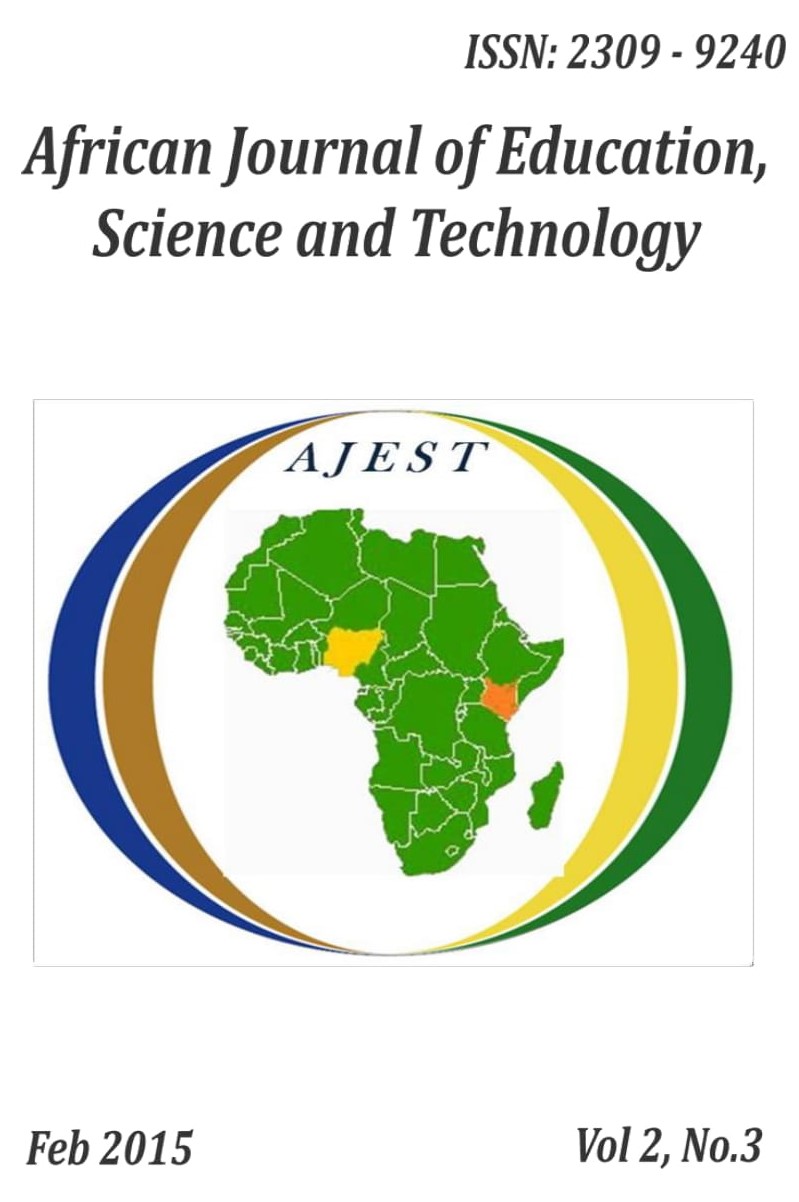Soil Fertility Improvement Using Crop Residues and Azolla for Sustainable Production of Rice and Fish in Irrigated Rice-Fish Farming System in the Lake Victoria Basin of Kenya
##article.abstract##
Rice paddy-fields are potential fish ponds that can be used to promote agricultural development by increasing fish production to improve farmer‟s income and the nutrition of rural populations in developing countries. An experiment, whose target was to increase both water and land productivity through poly-culture of rice and fish was set up in the Lake Victoria Basin, West Kano Irrigation Scheme (WKIS), Kenya. The experiment, with six treatment combinations and control, was laid in a completely Randomized Design (CRD) replicated four times. The treatments consisted of two levels of commercial Urea, at 48 & 72Kg N/ha in combination with two organic inputs; Nitrogen bio-fixer azolla at 2 ton/ha and rice straw at 3 ton/ha and fish culture. Results showed that application of azolla at 2 ton/ha + urea, 72Kg N/ha + Fish and that of Urea 72 Kg N/ha + Fish gave significant increase in plant height of 25.9% and 15.8% respectively compared to control. The former treatment gave the highest rice yield 4.16 ton/ha. It was also evident that yields from two azolla containing treatment did not differ significantly (P≤0.05) from each other despite having different levels of commercial urea. Fish potential in rice nutrient inputting was also explained, i.e. there is significant (P= 0.05) increase in rice yield in treatment with fish as the only nutrient input. Isolation of fish from other rice nutrient sources gave the highest fresh body weight yield 134.7 Kg/ha. The fish yields of the latter treatment had no significant (P≤0.05) difference to that of 2 ton azolla + 48Kg N/ha Urea which yielded 131.0Kg/ha. This study will help reduce the cost of production of paddy rice through use of organic inputs to supplement inorganic fertilizers and also reduced paddy rice field water requirement.
References
Bohlool, B. B., Ladha, J. K., Garrity, D.P., & George, T. (1992). Biological nitrogen fixation for sustainable agriculture: A perspective. Plant and Soil 141, 1-11.
FAO. (2006b). State of the World Aquaculture 2006 (pp. 134). Fisheries Department. Rome: Food and Agriculture Organization.
Government of Kenya. (2007) National Rice Development Strategy 2008- 2018. Nairobi: Ministry of Agriculture.
IRRI. (1990). Phosphorus requirements for sustainable agriculture in Asia and Oceania, Manilla.
Lejeune, A., Cagauan, A., & Van Hove, C. (1982). Azolla Research and Development in crop production:
Recent trends and Priorities. Symbiosis, 27, 33-51.
Okalebo, J. R., Gathua, K.W., & Woomer, P. L. (2002). A manual of laboratory methods of soil and plant analysis (2nd ed.). SSSEA, KARI, Moi University, SACRED-Africa.
Rao, I. M., Smithson P. C., & Turner B. (1971). Improving Phosphorus Fertility in Tropical Soils Through Biological Interventions. In. Uphoff N, Conference series. Earth & Environmental Sciences. Bangkok, Thailand.
Singh, V. P., Early, A. C., & Wickham, T. H. (1980). Rice agronomy in relation to fish culture. In R. S. V. Pullin, & Z. H. Shehadeh (Eds.), Proc. of the ICLARMSEARCA Conference. on Integrated Agriculture–Aquaculture Farming Systems (p. 258), 6-9 August 1979, Manila, Philippines,.
Watanabe, I. (1981). Azolla Anabaena symbiosis, its physiology and use in tropical agriculture. In Y.R. Dommergues and H.G. Diem, (Eds.), Microbiology of tropical soils. The Hague: Martinus Nijhoff/ W. Junk publisher.


